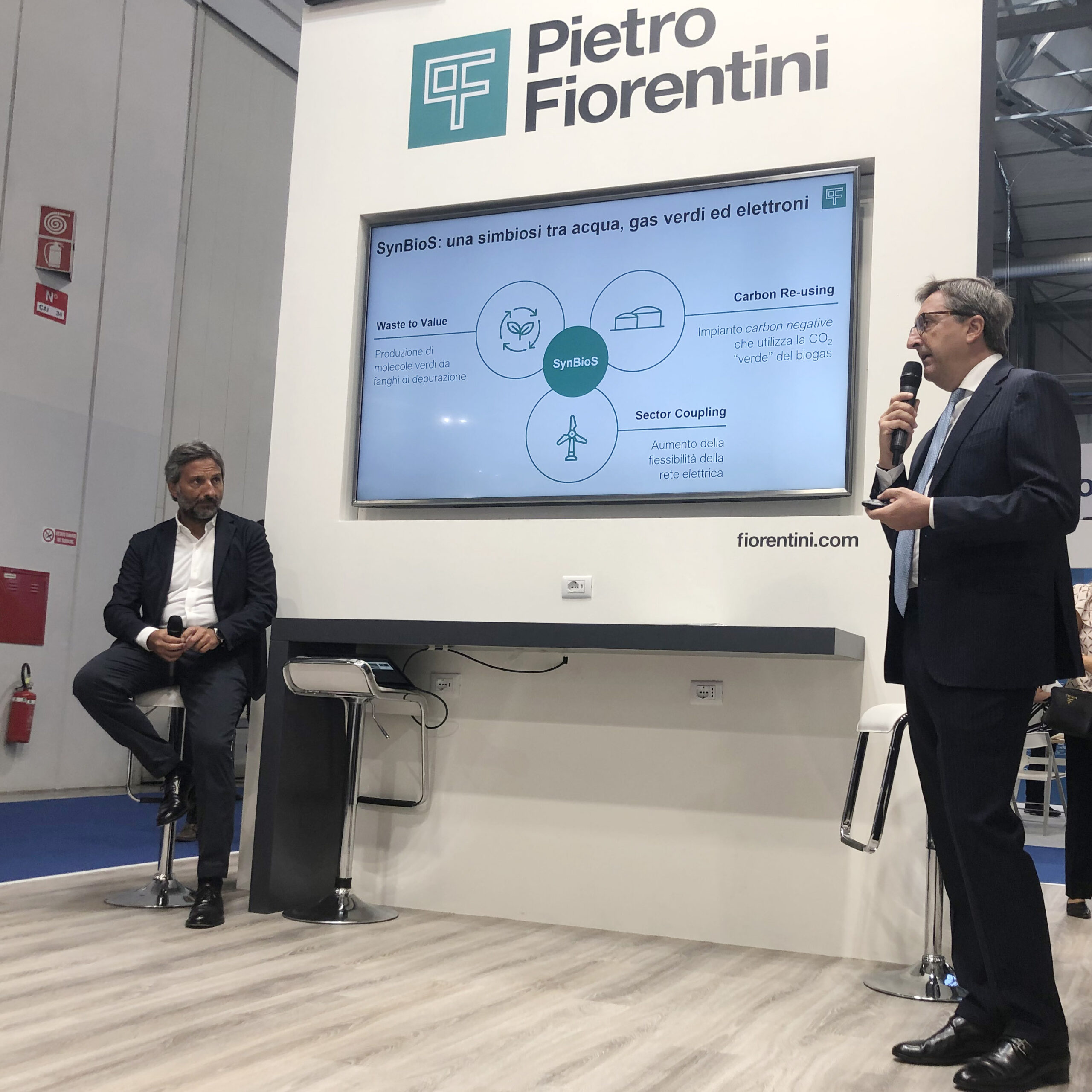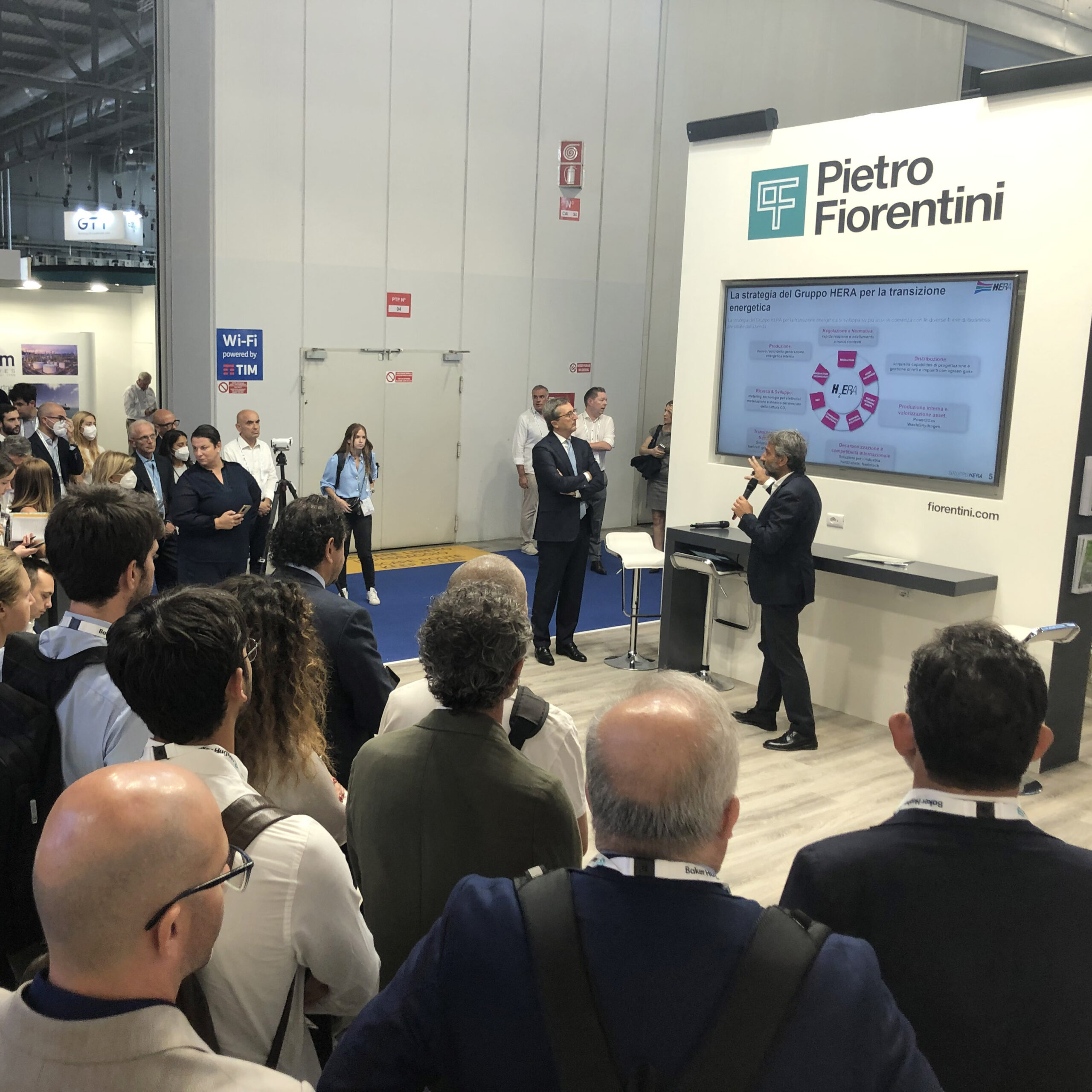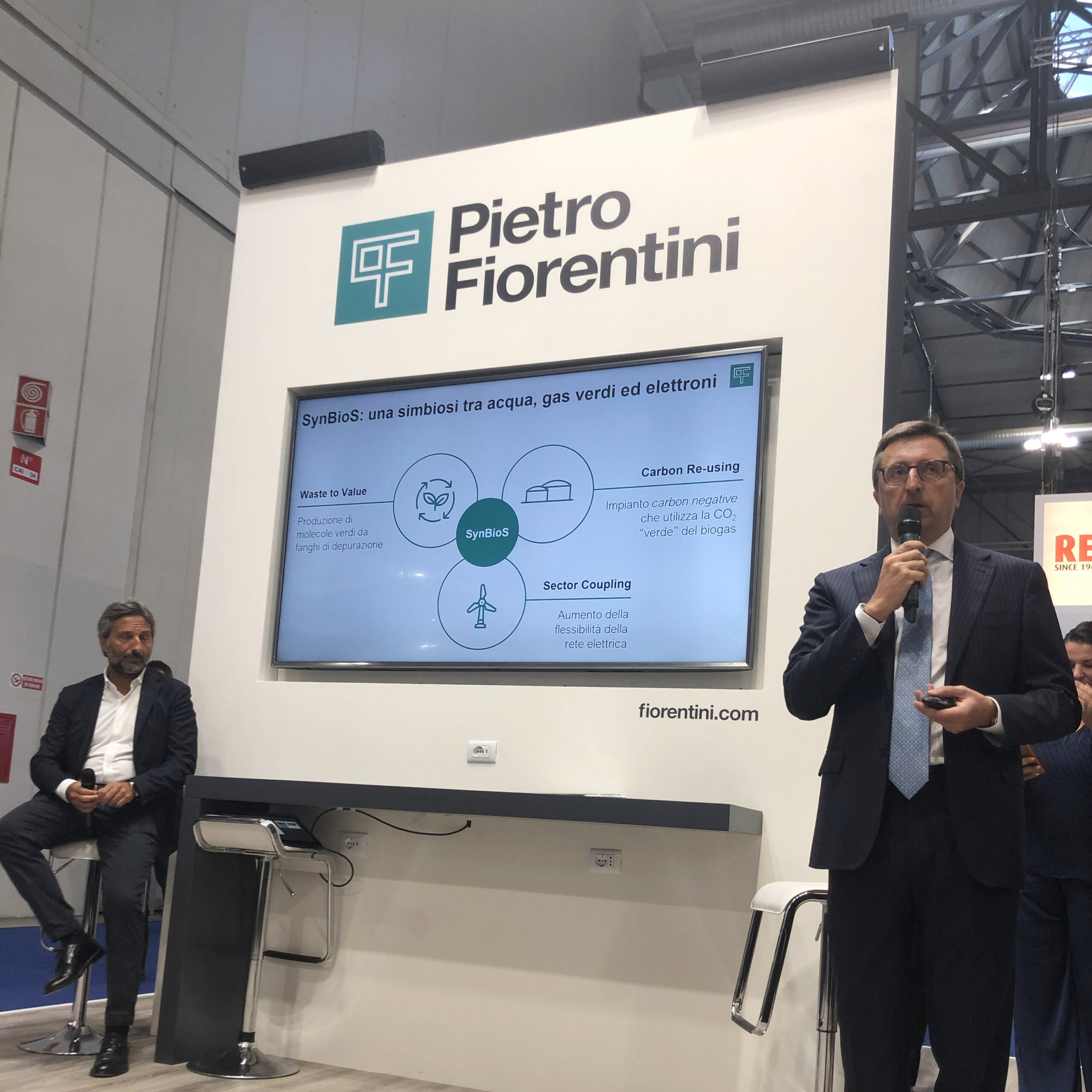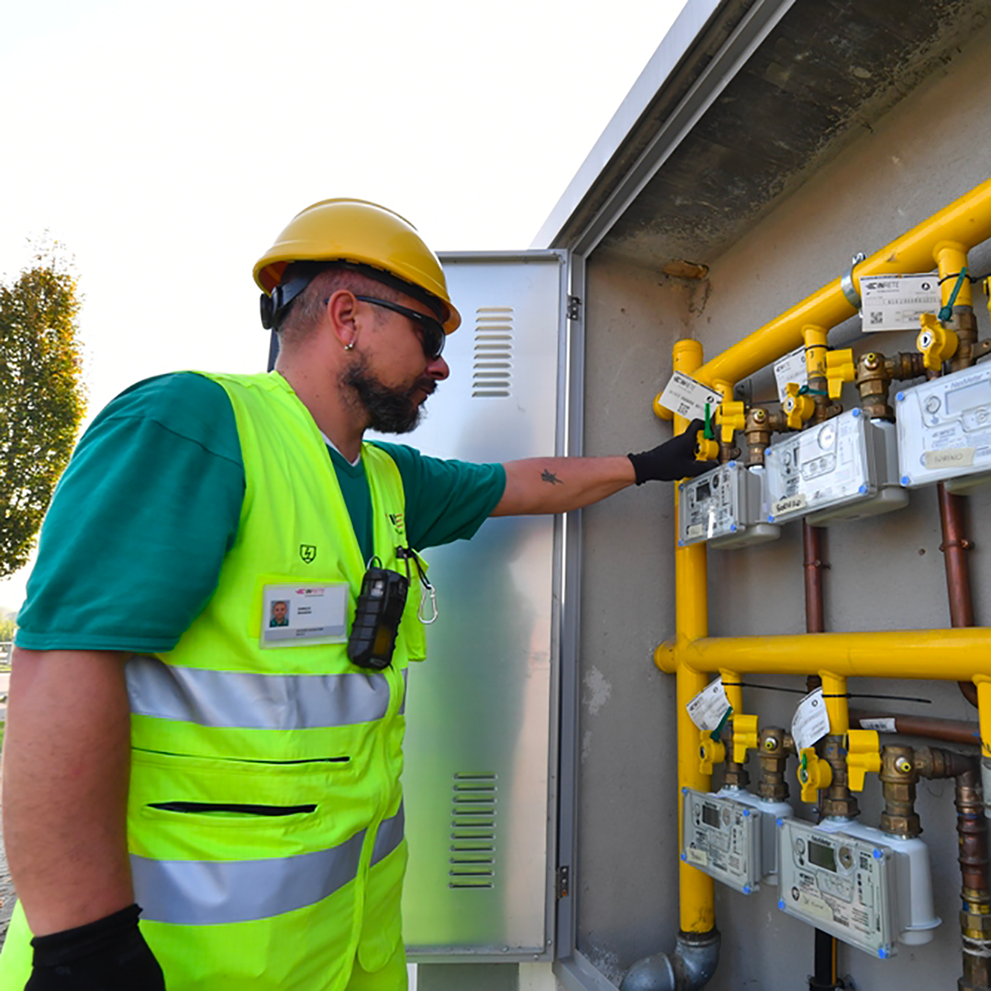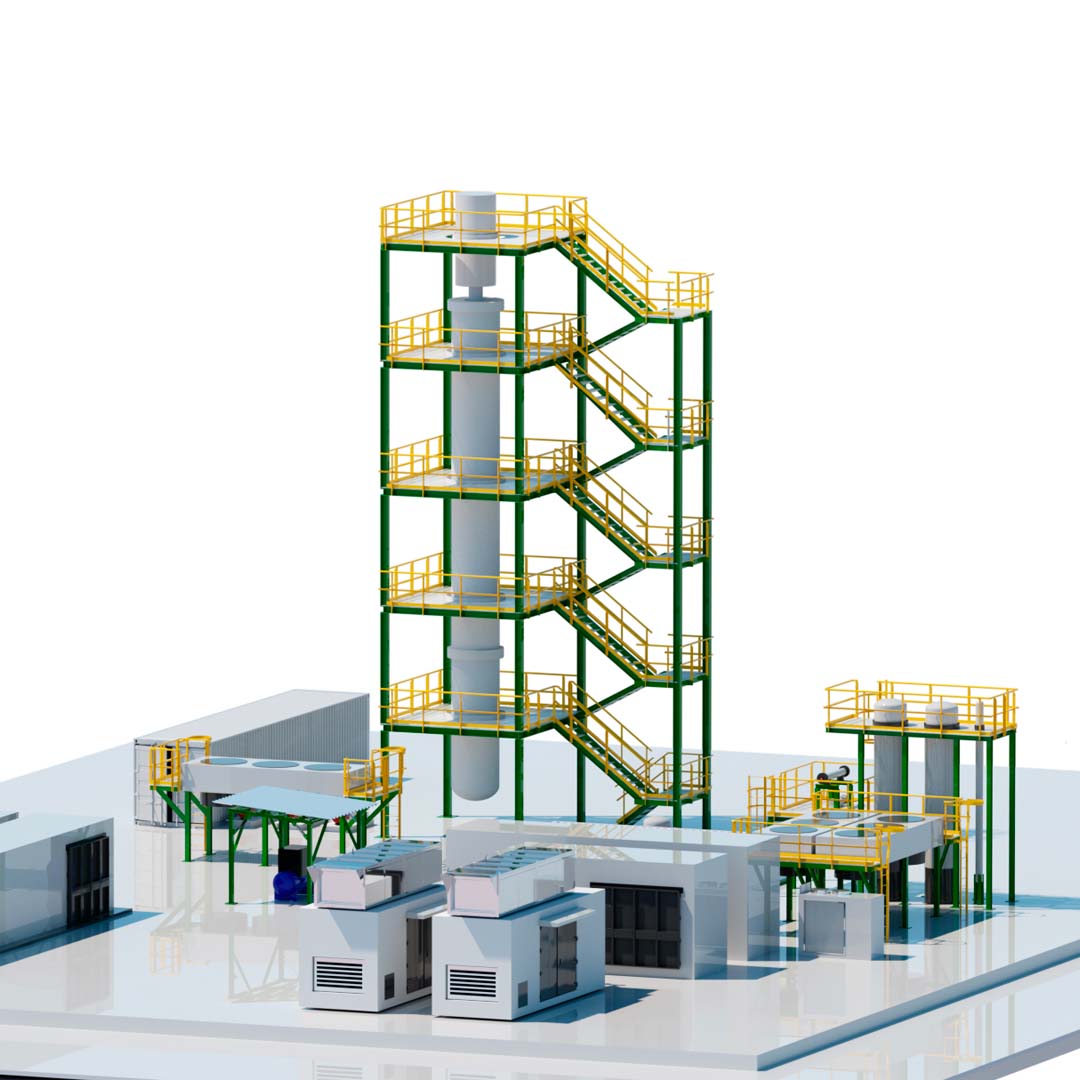
SynBioS: “power to gas” and multi-business expertise, to meet the challenge of decarbonisation
06 September 2022 - SolutionsThe Hera Group, one of Italy’s largest multi-utility companies, presents its innovative “power to gas” plant named SynBioS (Syngas Biological Storage) at the Gastech exhibition in Milan, an event dedicated to the energy sector. This plant will be able to convert renewable electricity and wastewater into “green” hydrogen and then into biomethane.
SynBioS, located in Bologna Corticella, inside the largest purification plant by users served among those managed by the Group, is currently scheduled to be operational within 2023 and is linked to the support coming from incentives, including for example those coming from the PNRR.
One of the first to be built internationally, the SynBioS plant has been made possible thanks to an investment coming to around 10 million euro and the synergies created between energy decarbonisation and water purification. The Group’s multi-business know-how, combined with its continuous investments in innovation, research and development, are in fact the strategic drivers that over the years have enabled Hera to develop cutting-edge integrated solutions in the field of “clean energy”, in line with the programmes outlined in its Business Plan.
For this project the Group has confirmed the collaboration with its outstanding partner Pietro Fiorentini, an Italian market leader in the production of products and services for the entire natural gas chain, that in recent years has made significant investments in developing innovative solutions related to the renewable energy sector.
A plant to obtain biomethane from renewable electricity
The plant, which uses “power-to-gas” technology to convert renewable electricity into synthetic natural gas, not only increases the pollutant reduction potential of the sewage treatment plant, but also allows excess renewable energy to be valorised by reusing biomethane in the city’s distribution network, which thus acts as a long-term storage facility.
More specifically, the plant will use wastewater and renewable electricity to produce “green” hydrogen and oxygen. Taking advantage of the CO2 found in the biogas produced by sewage sludge digestion, the hydrogen is converted into biomethane, which can then be fed into the city’s gas network, without concentration limits, and easily stored, thus enabling a diversified supply. Furthermore, oxygen will be used in the future to increase the sewage treatment plant’s capacity and efficiency in purification.
The figures: the annual methane gas consumption of 1,200 households sustainably covered
At full capacity, coming to 1 MW, the plant will be able to produce approximately 190 Nm3/h of green gas, preventing roughly 50 Nm3/h of carbon dioxide from being released into the atmosphere, corresponding to the annual impact of about 400 cars. This is a true flagship project from the point of view of the circular economy: while producing enough methane to cover the annual consumption of 1,200 households, in fact, the plant will use the wastewater produced by about 50 people every day, also helping to increase the quality of the purification process itself.
“For our Group, this plant represents a further significant experience in process integration between our state-of-the-art plants and an industrial synergy between the electricity grid and the city’s gas distribution network. The ‘power-to-gas’ plant and the purification plant, in fact, will work in a strong symbiosis within a perfectly circular regime”, says Alessandro Baroncini, the Hera Group’s Central Director for Networks. “Moreover, it provides additional confirmation of the Group’s commitments included in its significant investment programme, aimed at innovation, and improving the performance of networks and plants, with a view to continuously ensuring the highest service quality and efficiency and pursuing the goals of energy decarbonisation, environmental sustainability and resource protection, in line with the strategies outlined in our Business Plan. This initiative, once again, sees us as a forerunner in the sector, with the hope of providing the government and the regulator with elements that can help support the industrial development of these applications.”
“The strategic vision of the Hera Group, an excellence among our multi-utilities, coincides exactly with what Pietro Fiorentini has developed in recent years to support the ambitious European programmes as regards the energy transition”, says Cristiano Nardi, Executive Chairman of the Pietro Fiorentini Group. “We believe that the construction of the Bologna Corticella plant represents a fundamental milestone in the evolution of the energy sector, which is now facing a range of new challenges. Being a partner of the Hera Group once again for this challenging project is for us a source of great satisfaction and pride.”
